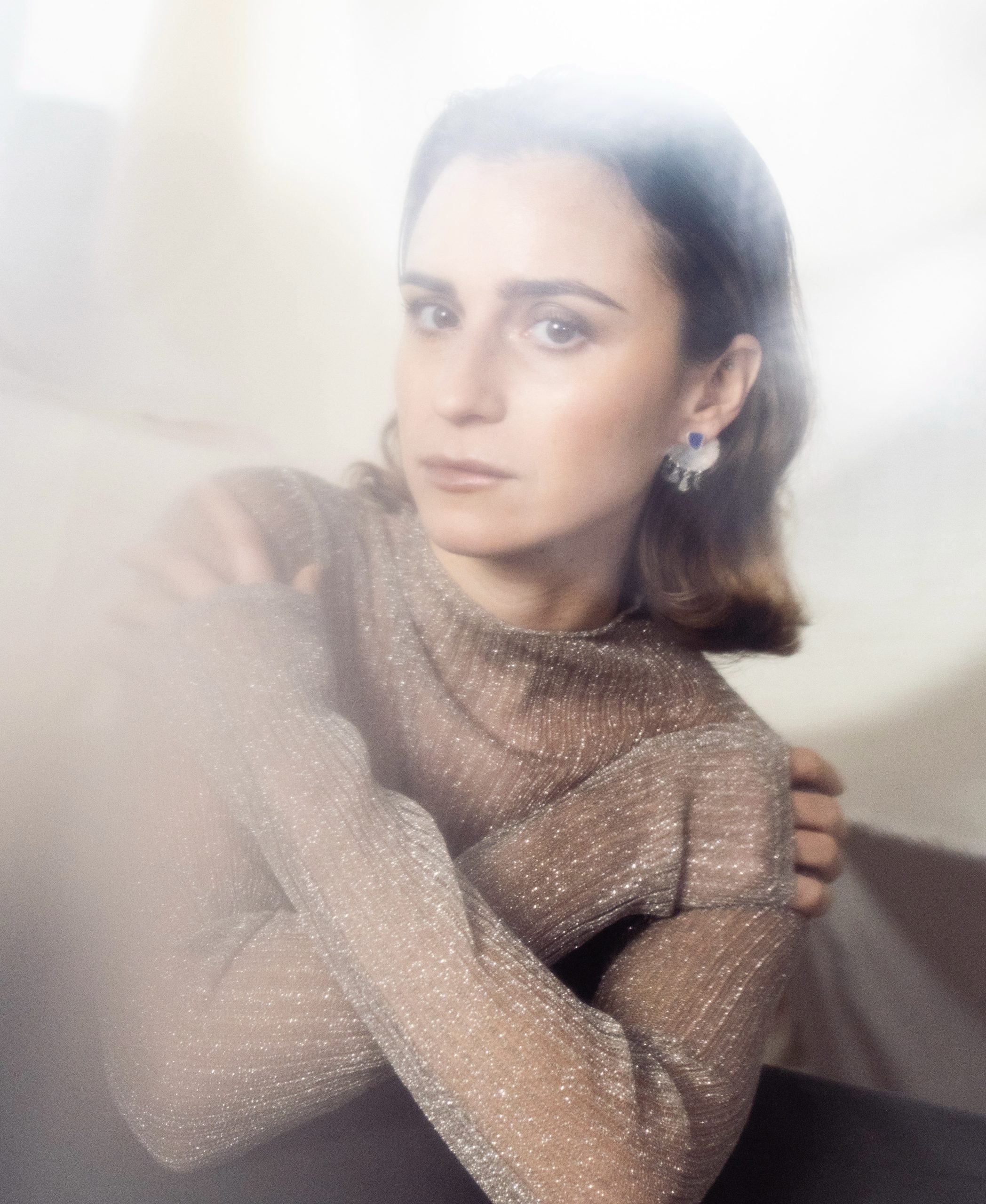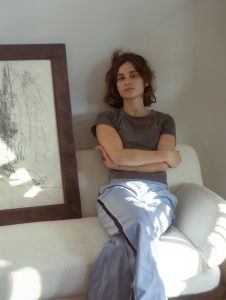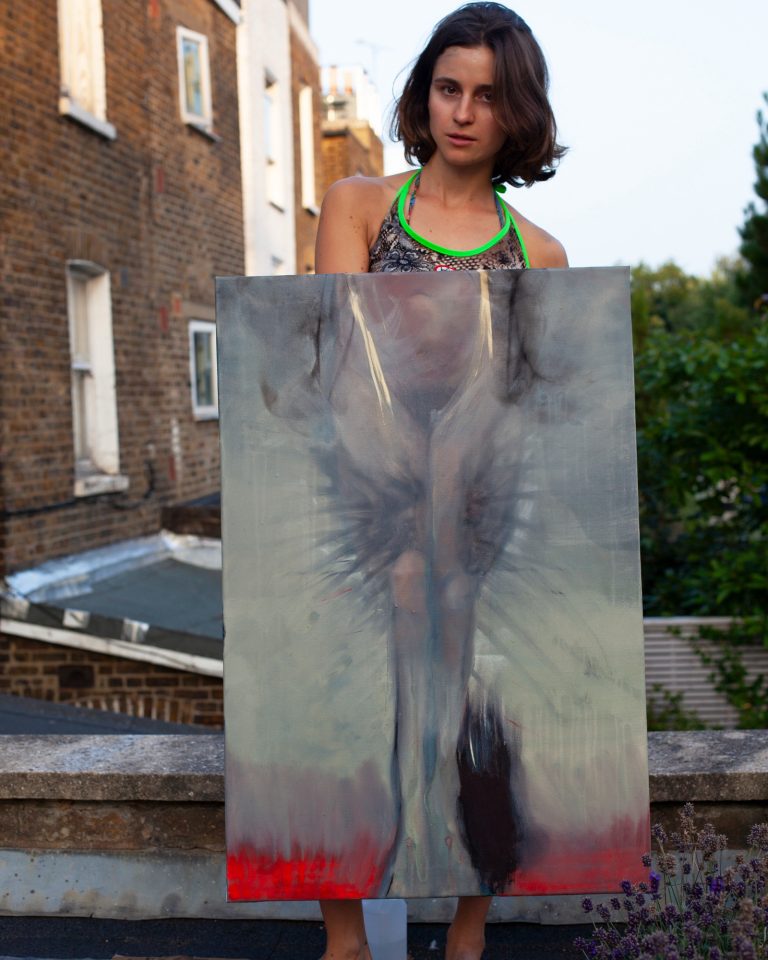In Conversation with: Electra Simon
On Design as Dialogue
I first met Electra Simon during our London Craft Week event at ISHKAR, where she worked as Creative Director for seven years. During that time, she helped shape collaborations with artisans across the globe, bringing traditional craft into conversation with contemporary design.
Today, Electra is focused on her own artistic practice, creating work that navigates memory, identity, and storytelling through painting and mixed media. Of Lebanese and English descent, she brings a layered perspective to questions of cultural exchange and collaboration—something that comes through clearly in her approach to working with craft traditions.

What follows is our conversation, where we touch on the back-and-forth between design and craft, how traditions can expand without losing their essence, and the importance of trust and dialogue when working across cultures.
Learn more about Electra’s work here.
How do you distinguish between design and craft in your work—or do you?
It’s really a dialogue. Usually, I begin by looking at the artisan’s existing work and thinking about what kinds of designs could be interpreted from it. From there, it becomes a back-and-forth between design and craft—diving into traditions, materials, and meanings, then returning to design. The prototyping stage is also collaborative: there are things the artisan may or may not be able to do, or they might suggest new approaches. Sometimes we’ll receive a prototype and feel it needs more design input. It’s always an exchange.
Do you believe craft should evolve with time? How do you balance tradition and innovation in your collaborations with artisans?
I think of it less as evolution and more as expansion. Traditional forms are pure and timeless, but within them is the capacity to stretch and reach new spaces.

How do you navigate the balance between honoring traditional techniques and allowing space for the artisan’s own creative evolution?
In my experience, artisans are very clear when new ideas aren’t working. They know the limits of their tradition, so it’s important to ask but also to let them lead.
How can we reimagine the role of the “designer” when working with traditional craft communities and ensure that craftsmen are not relegated to just “skilled laborers”?
I believe the artisan should have the final say on a product. Collaboration is a conversation where everyone brings something to the table, but the artisan is both the starting point and the ending point. They bring the skills, materials, and stories. The designer can introduce new ideas, audiences, and methods, nudging the work in unexpected directions. But equally, the artisan can push the designer to think differently. That’s what makes it a true collaboration.
Sometimes inspiration can come from simply asking an artisan to share their favorite symbols, places in the city, or things that hold memory. When those resonate with the designer’s own experiences, the result can feel universal. It’s like inspiration is crossing the boundary.
When working across cultures and geographies, how do you stay aware of the power dynamics at play? How do you build trust when working with people from different lived experiences, languages, or social contexts?
Power dynamics are real—financial differences, language barriers, and political contexts. There are tools to help navigate some of those differences, like Google translate. But for me the key is connecting on a human level. I want to understand the person’s life beyond the work–what they’re doing outside of what they’re making–and share some of my own when appropriate. Creativity feels too personal to reduce to “send a brief, get a product back.”
Building trust means sustaining the relationship: checking in, knowing what’s happening in their world, being patient and aware. When I worked with Ishkar, many artisans were in politically unstable regions. Understanding their context and showing care—like checking in when something happened—was an essential part of working together.
Can you share an example of a moment in your collaborative work that changed you—or your approach—unexpectedly?
One example that comes to mind is with Ishkar’s glassware. We once received crates of traditional glass, but the artisans had slipped in a few pieces with their own variations—almost like guerrilla marketing. At first it surprised us, but I realized they had created something exciting. With a small tweak and some back-and-forth, it became a new product line. That unplanned exchange sparked a fresh design direction and reminded me that collaboration works best when surprises are allowed to surface.
What gives you hope about the future of collaborative, cross-cultural design?
I’m quite hopeful. There’s now more awareness around appropriation and power dynamics, and buyers are more conscious and ethical, which pushes the whole system forward. As much as social media can be destructive in other ways, it’s also a powerful tool here: it allows for better communication, easier translation, and more visibility for artisans. I think that creates real potential for more equitable and creative collaborations in the future.
Learn more about Electra’s work here.

